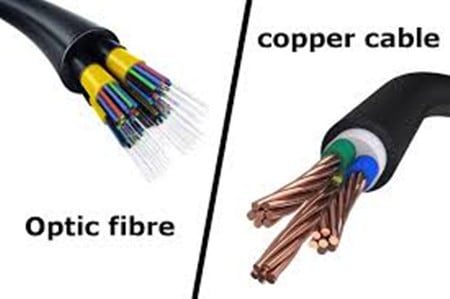Copper Distributed Data Interface (CDDI) represents a derivative of Fiber Distributed Data Interface (FDDI), optimized for copper cabling instead of fiber-optic channels. Offering data transmission speeds of up to 100 Mbps over unshielded twisted-pair (UTP) cabling, CDDI serves as a cost-effective alternative to FDDI systems. However, the reach is confined to approximately 100 meters due to cable limitations.
In this chapter:
- What is CDDI?
- The Technical Underpinnings of CDDI
- CDDI vs. FDDI: A Comparative Analysis
- Decline in Popularity and Current Relevance
- Final Thoughts
- References

1. What is CDDI (Copper Distributed Data Interface)?
CDDI is, essentially, the use of Fiber Distributed Data Interface (FDDI) over copper cabling as an alternative to using fiber-optic cabling. Copper Distributed Data Interface (CDDI) can send data over unshielded twisted-pair (UTP) cabling at 100 Mbps, but cable lengths are limited to about 100 meters. The architecture and operation are similar to FDDI, but CDDI is not as commonly implemented as FDDI.
2. The Technical Underpinnings of CDDI
Operating on the same underlying architecture as FDDI, CDDI employs a token-passing protocol over a dual-ring topology. Essentially, data packets circulate around the network until they reach their intended destination. As a result, Copper Distributed Data Interface ensures a reliable and redundant data transfer mechanism, even though it sacrifices some of the advanced security features inherent to fiber-optic systems.
3. CDDI vs. FDDI: A Comparative Analysis
When assessing CDDI against FDDI, several key considerations come into play. Firstly, CDDI provides substantial cost advantages due to the relatively inexpensive nature of copper cabling compared to fiber-optic materials. Consequently, organizations with budget constraints may opt for Copper Distributed Data Interface installations.
However, this cost advantage comes with trade-offs. For instance, copper cabling lacks the security robustness of fiber-optic channels, as it’s susceptible to tapping and electromagnetic interference. Additionally, CDDI’s operational range is limited to approximately 100 meters, constraining its applicability in large-scale deployments.
4. Decline in Popularity and Current Relevance
Over time, the price differential between fiber-optic and copper installations has narrowed. Fiber-optic technology now provides superior efficiency, immensely higher bandwidth capabilities, and robust immunity to various forms of interference. These advancements have relegated CDDI to a niche status, mostly confined to legacy systems or specific, cost-sensitive applications.
5. Final Thoughts
While Copper Distributed Data Interface (CDDI) presented a compelling alternative to FDDI in the past, the landscape has shifted. Advances in fiber-optic technology have eroded CDDI’s cost advantage while outpacing it in performance and security. Nevertheless, understanding CDDI remains crucial for network professionals, as it serves as a foundational concept in the history of network design and implementation.
6. References
- IEEE Standards Association. “IEEE 802.5: Token Ring Access Method and Physical Layer Specifications.” IEEE, 1995.
- Stallings, William. “Data and Computer Communications,” 10th Edition. Pearson, 2014.
- Comer, Douglas E. “Internetworking with TCP/IP,” 6th Edition. Prentice Hall, 2014.
- “A Technical and Economic Comparison of FDDI and CDDI,” Journal of Network Systems, Vol. 12, No. 4, 2001.
- “Ethernet and Beyond,” White Paper, Dell EMC, 2017.
- “Copper vs fibre optic cable“, December 2020, Basec.org.